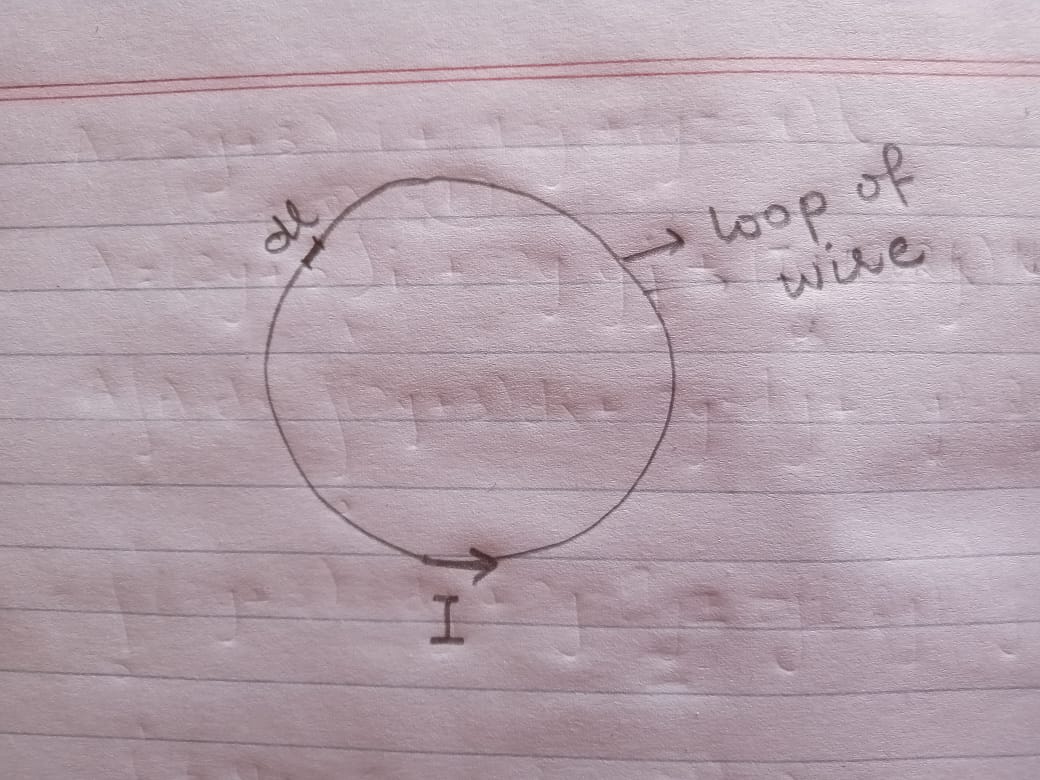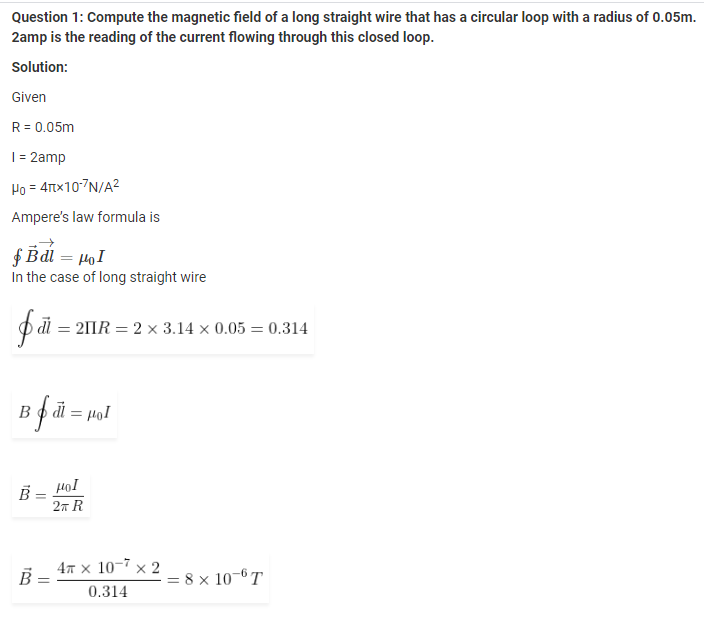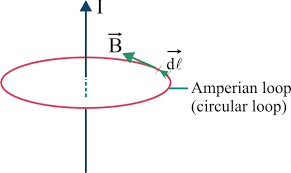The numerical is given below:
Q: Compute the magnetic field of a long straight wire that has a circular loop with a radius of 0.05m. 2amp is the reading of the current flowing through this closed loop.
My teacher solved the above numerical as follows:
But I have a question that is:
Q: In ampere's law, there is a dot product of B and dl so where is cosθ? If Cosθ is not here, this means Cosθ = 1 which means that θ = 0° but how is θ = 0° when the B points outward or into the loop and dl is the small piece of the circumference of the loop?
If the solution is correct, please explain it and give the answer to my above query. If not correct, then please provide the correct solution to the problem.
EDIT:
There is no figure included in the numerical. We have to make ourselves. I think the figure of wire might be like this if the current loop itself is supposed as amperian loop:



